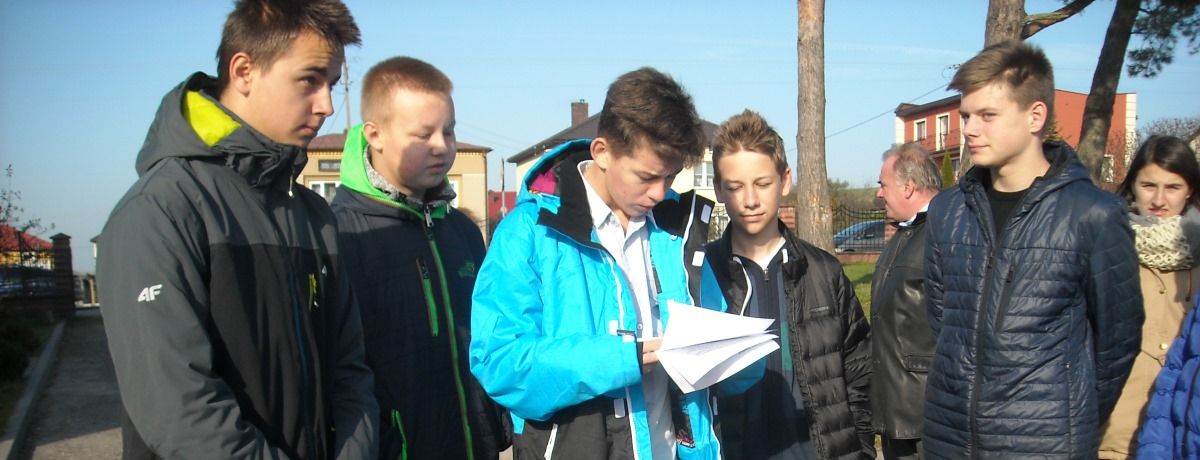Sobków
John Paul II Public Junior High School


Thanks to the School of Dialogue workshops, the students from Sobków had the opportunity to become teachers and guides, sharing their knowledge with others. For their final project, students prepared a walking tour intended for elementary school sixth-graders and junior high school students in their final year. Tour participants were shown around Jewish-related sites in Sobków: the knights’ castle, former Jewish homes around the market square, the site of the synagogue and the Jewish cemetery.
Jews had settled in Sobków since the 17th century. In 1765 the Kahal is documented to have existed; a synagogue was built soon afterwards.
Development of the railroad in the second half of the mid-19th century accelerated Jewish settlement in the region, mostly in the nearby town of Jędrzejów. However, the Jewish population of Sobków was also growing. At that time, the Jewish community had its own cemetery, mikveh, cheder, slaughterhouse and a house for the rabbi. Jews comprised over half of the local population, working in trade and crafts, predominantly as tailors and shoemakers. In the first half of the 19th century, the town’s elementary school had both Jewish and Christian pupils.

After World War I, population of Sobków population decreased. During World War II, in 1940, 800 Sobków Jews (including Jews resettled to the town from other villages) were placed in Jędrzejów’s ghetto. By August 1942, all of them had been deported to Treblinka extermination camp. The wooden building of the synagogue did not survive the war, but the area of the Jewish cemetery at Krzywa Street remains intact. Although many headstones are damaged, at least a few dozen stand in their original locations. Foundations of an ohel have also survived. A memorial plaque can also be spotted at the cemetery.
For Sobków’s junior high school students, participation in School of Dialogue workshops presented an opportunity to focus on the town’s Jewish heritage, but also – on its history in general. Learning history from the local perspective – as history of their neighbors, grandparents or great grandparents – was a revelation to them.
Workshop participants managed to conduct a number of interviews with Sobków residents, who told them about the Jewish clothing store by the church, which was popular with the local women, how Shabbat was celebrated in the town and how Jews and Christians had lived in peace. Students included transcripts from these short interviews in their multimedia presentation. The project had transformed them, showing them that traces of the past can be found around us, but also taught them about teamwork, event organization and planning. They themselves name the pros of having participated in the program: “Our meetings enriched my knowledge and also made me think”, “Our meetings taught me many new things and encouraged me to search for Sobków’s history. After all, the story of my town begins with the history of the local Jews.”

School:
John Paul II Public Junior High School
Students:
2nd and 3rd year students
Teacher:
Stanisław Osowski
Expert:
Agnieszka Dziarmaga
Educators:
Adam Gąsecki, Barbara Sieradz
In appreciation to the Conference on Jewish Material Claims Against Germany (Claims Conference) for supporting this educational program. Through recovering the assets of the victims of the Holocaust, the Claims Conference enables organizations around the world to provide education about the Shoah and to preserve the memory of those who perished.

In appreciation to Friends of the Forum for supporting the School of Dialogue educational program.
